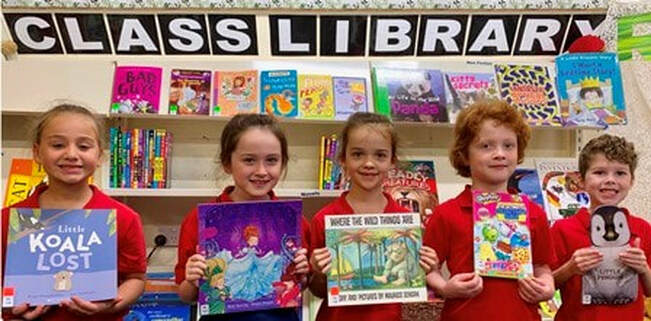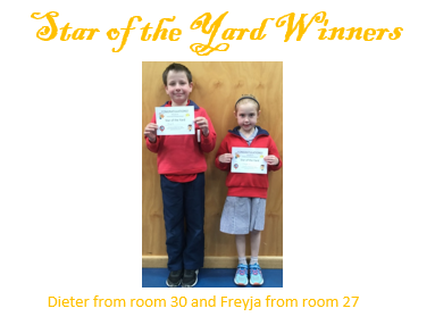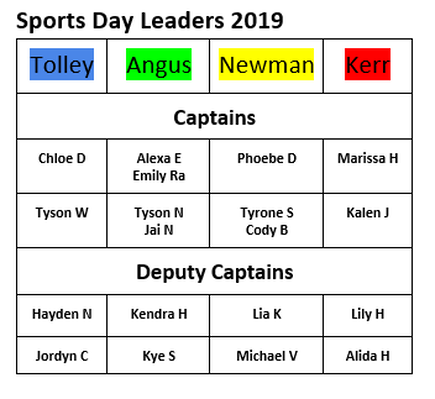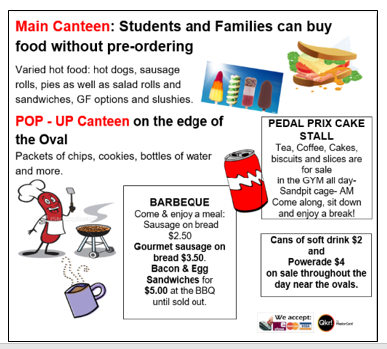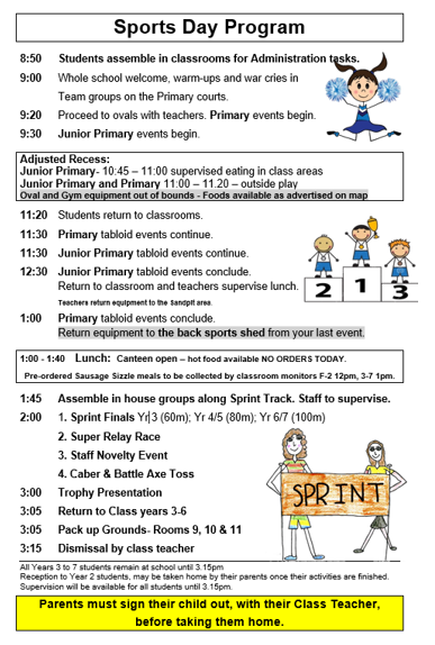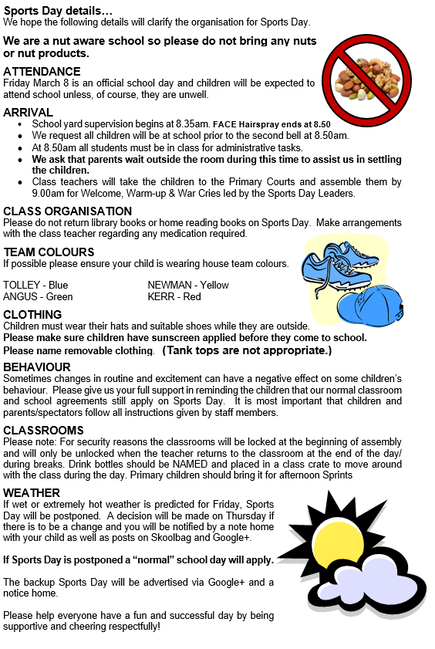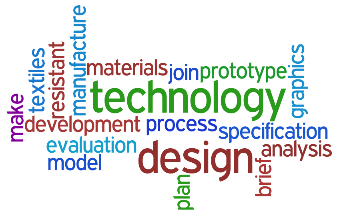In this issueIn this Issue
Diary Dates
March 1st – SAPSASA Carnival 5th- Pancake Day 8th- Sports Day 11th – PUBLIC HOLIDAY 12th- 14th – 9/10 Aquatic Camp 18th – GC Meeting 7pm 20th – Athletics Carnival 22nd – Assembly 10am April 3rd – Touch Footy Carnival 12th – Assembly 10am, LAST DAY Term 1 Road Crossing
Monitors Wed 6th Mar – Tue 12th Mar Sophie M, Lia K, Kiara T Wed 13th Mar – Tue 19th Mar Hayden N, Elliot W-B, Cobey D Wed 20th Mar – Tue 26th Mar Amber C, Tierra T, Lilly W Please arrive by 8.25am |
Class Libraries: Improving Student Reading
Frequent independent reading supports a student’s learning across the curriculum. The more children read the more they learn. So, at Ardtornish we are committed to making access to books as easy as possible. When all classes make their weekly visit to the library each student borrows on average of 5 to 10 books and last year 42,040 books were loaned out.
At Ardtornish we set high expectations for students as readers and students from F-7 are encouraged to read at least 40 books a year. Last year 75 % of our year 2/3 to 7 students read 40 books or more (sometimes in the 100’s), 85% read 30 plus books and 95% 20 plus books. The Read Write Inc program, run in the junior primary, is highly effective and supports many students to become independent readers by year 1. Just knowing how to read is not enough, we want students to be passionate, independent readers for life. Research shows that students who read more, are better at every subject and are more likely to achieve higher educational qualifications later in life. How much a child reads is linked to four main factors:
To address these four key factors effectively we have committed, over the next few years, to establishing class libraries in every classroom. In 2019 we are establishing independent classroom libraries in 9 rooms. These are specific, age appropriate libraries that operate entirely independently from our main school library and their presence will ensure that students are constantly surrounded by books and have instant access to fiction and non-fiction texts. The selection of books in class libraries will grow over the years as students actively participate in selecting more titles for the collection and teachers encourage reading and to make the use of the collection an integral part of the classroom. Classroom libraries will not replace the school library, which contains a wider range of titles, but they will encourage children to more easily borrow, read and share popular books. Students that have access to classroom libraries become more confident readers and actually borrow more from their school library as well. The classroom libraries are an exciting addition to our school literacy program and will help to continue to build on Ardtornish Primary School’s successful reading outcomes. |
Canteen ROSTERTuesday 5th Michele S
Wednesday 6th Mary-Anne R Thursday 7th Simon S, Emma S Friday 8th SPORTS DAY - Emma, Lara, Josie, Megan Tuesday 12th Michele S Wednesday 13th Mary-Anne R Thursday 14th Megan K, Emma S Friday 15th Kellie F, Stacey C, Emma S Help needed for Sports Day Pop up Canteen and BBQ
We are looking for some help from parent/grandparent volunteers who could help cook or serve the BBQ on sports day. Friday 8th March. If you could spare half an hour or even 1 hour that would be greatly appreciated. Complete a form at the front office. For more information or any questions please email Mary-Anne [email protected]. |

STEM (Science, Technology or Maths)
Over the last 14 months, Liz Gehling and I have attended many STEM conferences and training sessions. Liz and I are part of the 500 Stem Educators in Primary Schools (STEM 500) which is an element of the Department for Education STEM Strategy which aims to have at least 500 primary teachers with a STEM specialization in South Australian government school by 2020.
Two teachers from every site have attended Professional Development over the year. The program has built upon teacher’s knowledge and confidence in designing learning in the STEM disciplines of Science, Technology or Mathematics, and through this, increase student participation and develop positive attitudes towards these learning areas.
Liz and I were given the Technology discipline as our focus. Following our attendance at the workshops and Professional Learning Communities meeting, we committed to site-based / PLC activities such as collaborative work, trialing learning and assessment design strategies. Through reflection, we will share experiences and tasks and analyse student work for evidence of learning. Last week, all STEM 500 teachers met and we worked in mixed discipline groups to design a unit of work incorporating Science, Maths and Technology. I will be trailing this unit of work with students in Room 31, as will the other teachers in our Partnership group. We meet later this term to discuss our findings and refine or rewrite the unit of work.
STEM looks different across every class at every school. Here are some examples of what students learning STEM (Technologies) could be engaged in:
I look forward to sharing more information as we get it.
Val Crozier
Over the last 14 months, Liz Gehling and I have attended many STEM conferences and training sessions. Liz and I are part of the 500 Stem Educators in Primary Schools (STEM 500) which is an element of the Department for Education STEM Strategy which aims to have at least 500 primary teachers with a STEM specialization in South Australian government school by 2020.
Two teachers from every site have attended Professional Development over the year. The program has built upon teacher’s knowledge and confidence in designing learning in the STEM disciplines of Science, Technology or Mathematics, and through this, increase student participation and develop positive attitudes towards these learning areas.
Liz and I were given the Technology discipline as our focus. Following our attendance at the workshops and Professional Learning Communities meeting, we committed to site-based / PLC activities such as collaborative work, trialing learning and assessment design strategies. Through reflection, we will share experiences and tasks and analyse student work for evidence of learning. Last week, all STEM 500 teachers met and we worked in mixed discipline groups to design a unit of work incorporating Science, Maths and Technology. I will be trailing this unit of work with students in Room 31, as will the other teachers in our Partnership group. We meet later this term to discuss our findings and refine or rewrite the unit of work.
STEM looks different across every class at every school. Here are some examples of what students learning STEM (Technologies) could be engaged in:
- coding
- designing and building prototypes like windmills, solar cars and water sampling technologies
- agri-science and agricultural engineering
- robotics
- growing our own food and then using it to make a meal
- working with local industries and communities to solve local environmental issues
- developing technical and engineering skills to troubleshoot the source of a problem, repair a machine or debug an operating system.
I look forward to sharing more information as we get it.
Val Crozier


